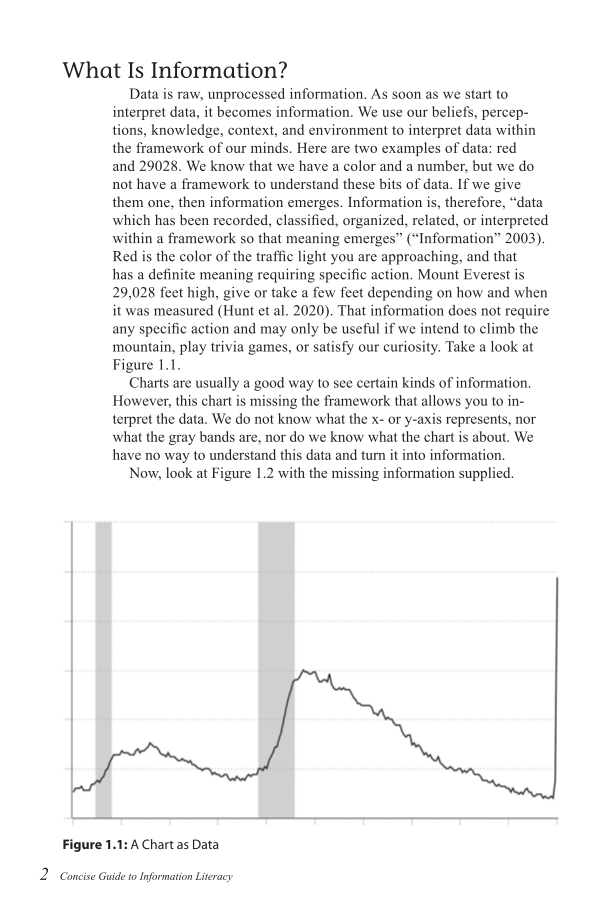2 Concise Guide to Information Literacy What Is Information? Data is raw, unprocessed information. As soon as we start to interpret data, it becomes information. We use our beliefs, percep- tions, knowledge, context, and environment to interpret data within the framework of our minds. Here are two examples of data: red and 29028. We know that we have a color and a number, but we do not have a framework to understand these bits of data. If we give them one, then information emerges. Information is, therefore, “data which has been recorded, classified, organized, related, or interpreted within a framework so that meaning emerges” (“Information” 2003). Red is the color of the traffic light you are approaching, and that has a definite meaning requiring specific action. Mount Everest is 29,028 feet high, give or take a few feet depending on how and when it was measured (Hunt et al. 2020). That information does not require any specific action and may only be useful if we intend to climb the mountain, play trivia games, or satisfy our curiosity. Take a look at Figure 1.1. Charts are usually a good way to see certain kinds of information. However, this chart is missing the framework that allows you to in- terpret the data. We do not know what the x- or y-axis represents, nor what the gray bands are, nor do we know what the chart is about. We have no way to understand this data and turn it into information. Now, look at Figure 1.2 with the missing information supplied. Figure 1.1: A Chart as Data
Document Details My Account Print multiple pages
Print
You have printed 0 times in the last 24 hours.
Your print count will reset on at .
You may print 0 more time(s) before then.
You may print a maximum of 0 pages at a time.





























































































































































































































